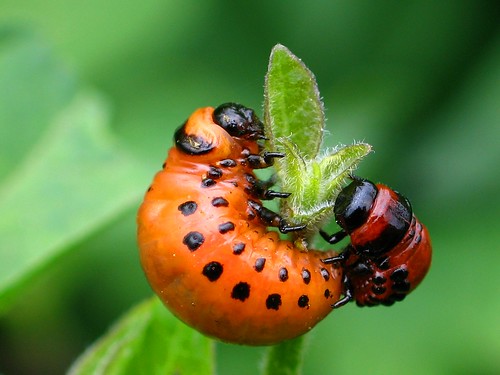
raised bed with soaker hose by biologie.
TheGardenLady has invited people with horticultural interests and expertise to contribute posts to this blog. The following article was submitted by Lou Manfredini. In the article Lou discusses products and tips on how to keep things moist in your garden so that it looks great and stays healthy.  Lou is Ace Hardware’s Home Expert. He is a nationally recognized DIY expert, hosting his own home improvement call-in radio show on WGN Radio in Chicago and a nationally syndicated home show, HouseSmarts. Lou is also the official home improvement expert for NBC’s TODAY Show. To read Lou’s last article about how to build a raised garden bed click here.  To learn about more tips and projects from Lou visit here.
There are countless fertilizers, bug sprays, soil mixtures, and homemade concoctions that claim to enhance your flowers, trees, shrubs and vegetables but the best thing to make your garden look its best is water. Unfortunately between droughts, vacations and busy schedules watering plants and gardens can become difficult. Here are some great products and tips on how to keep things moist so your garden looks great and stays healthy.
Drip Hoses, Soaker Hoses and Water Timers:
Drip Hoses are the unsung heroes of the garden. These black hoses can be strategically placed throughout your plant material to gently soak the surrounding ground. The trick is to place the hose under the drip line of the particular plant. So if it’s a bush, run the drip hose at the base of the plant where water would drip to the ground if it was raining. Another option is soaker hoses which are heavy-duty hoses permeated with tiny holes throughout. You lay these hoses down in your garden and water will seep through the holes slow and steady to get to the root of the plants. Ace Hardware offers a Soaker Hose that can help you reduce your water usage by 70%.
Another way to conserve water is to hook up your hoses to a timer such as the Raindrip Electronic Drip System Water Timer. This will help conserve water by letting you set how long you want the water to run as well as what time of day. It also ensures that you won’t forget to turn the sprinklers off.
Water Retention Pellets and Granules:
For flower boxes, hanging baskets and potted plants, these polymer pellets and granules are designed to retain and slowly release water to your plant. By mixing these into the soil you can make each watering go farther. Using polymer pellets such as SoilMoist Granules is perfect for when you’re trying to conserve water or if you’re heading out of town for a few days as they’ll keep your plants looking healthy and vibrant.
Continue reading “Want to really help you garden grow? The secret is….WATER!”







